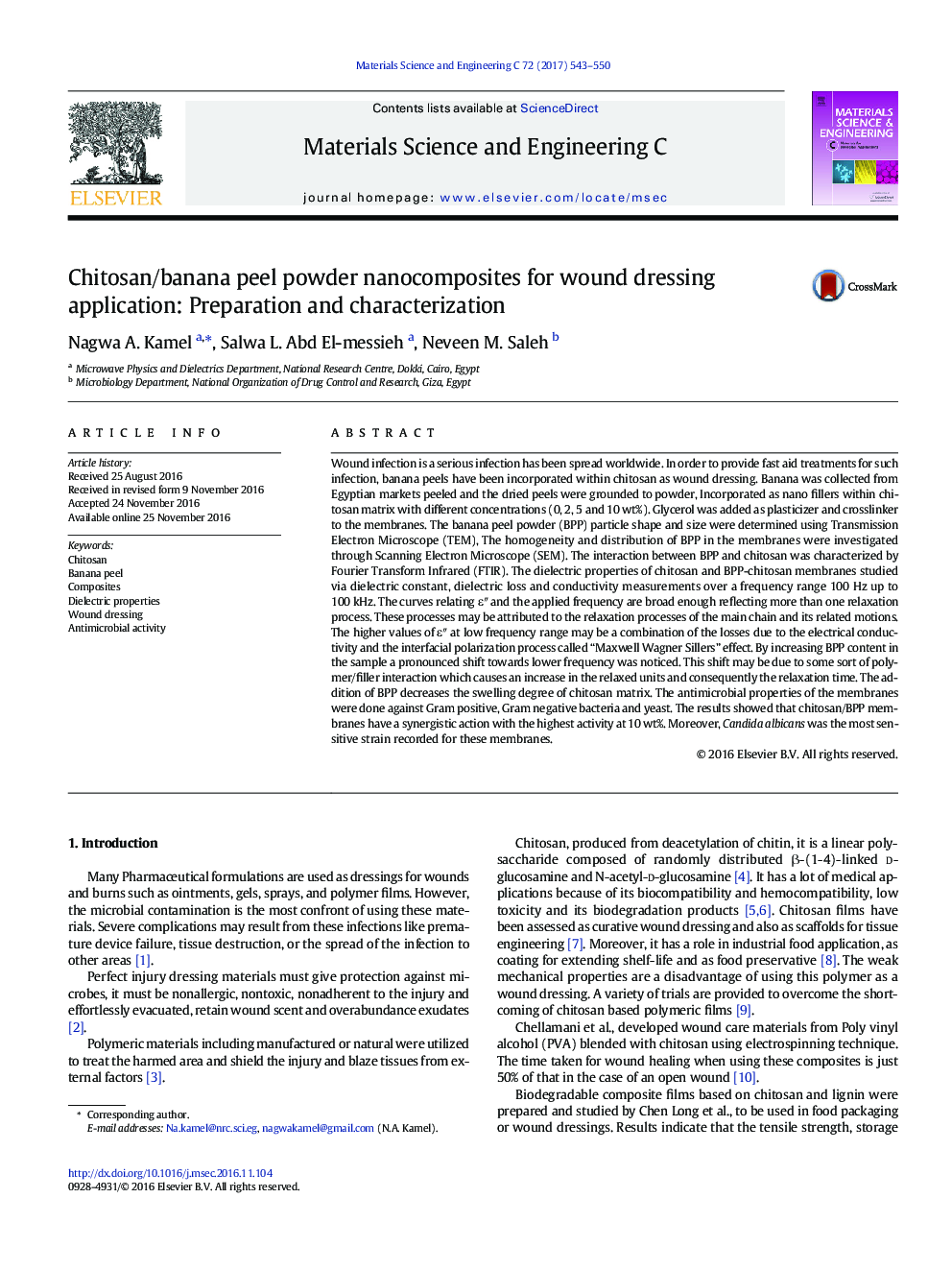| Article ID | Journal | Published Year | Pages | File Type |
|---|---|---|---|---|
| 5435234 | Materials Science and Engineering: C | 2017 | 8 Pages |
Wound infection is a serious infection has been spread worldwide. In order to provide fast aid treatments for such infection, banana peels have been incorporated within chitosan as wound dressing. Banana was collected from Egyptian markets peeled and the dried peels were grounded to powder, Incorporated as nano fillers within chitosan matrix with different concentrations (0, 2, 5 and 10 wt%). Glycerol was added as plasticizer and crosslinker to the membranes. The banana peel powder (BPP) particle shape and size were determined using Transmission Electron Microscope (TEM), The homogeneity and distribution of BPP in the membranes were investigated through Scanning Electron Microscope (SEM). The interaction between BPP and chitosan was characterized by Fourier Transform Infrared (FTIR). The dielectric properties of chitosan and BPP-chitosan membranes studied via dielectric constant, dielectric loss and conductivity measurements over a frequency range 100 Hz up to 100 kHz. The curves relating εⳠand the applied frequency are broad enough reflecting more than one relaxation process. These processes may be attributed to the relaxation processes of the main chain and its related motions. The higher values of εⳠat low frequency range may be a combination of the losses due to the electrical conductivity and the interfacial polarization process called “Maxwell Wagner Sillers” effect. By increasing BPP content in the sample a pronounced shift towards lower frequency was noticed. This shift may be due to some sort of polymer/filler interaction which causes an increase in the relaxed units and consequently the relaxation time. The addition of BPP decreases the swelling degree of chitosan matrix. The antimicrobial properties of the membranes were done against Gram positive, Gram negative bacteria and yeast. The results showed that chitosan/BPP membranes have a synergistic action with the highest activity at 10 wt%. Moreover, Candida albicans was the most sensitive strain recorded for these membranes.
